Gypsy Moth in Arkansas
Gypsy moth was introduced to the U.S. from Europe in 1868 in an effort to breed a
better silk worm. Soon thereafter, some of the gypsy moths escaped from the lab as
a result of a series of accidents. Since no one yet realized the destructiveness
of this pest, no efforts were made to kill the escaped moths. They have been spreading
outward from Medford, MA, since then. Gypsy moth is now known through the entire
northeastern US, south into North Carolina and west into Wisconsin with occasional
outbreaks in other states. Arkansas has had occasional confirmed reports of gypsy
moth, most recently in the summer of 2012.
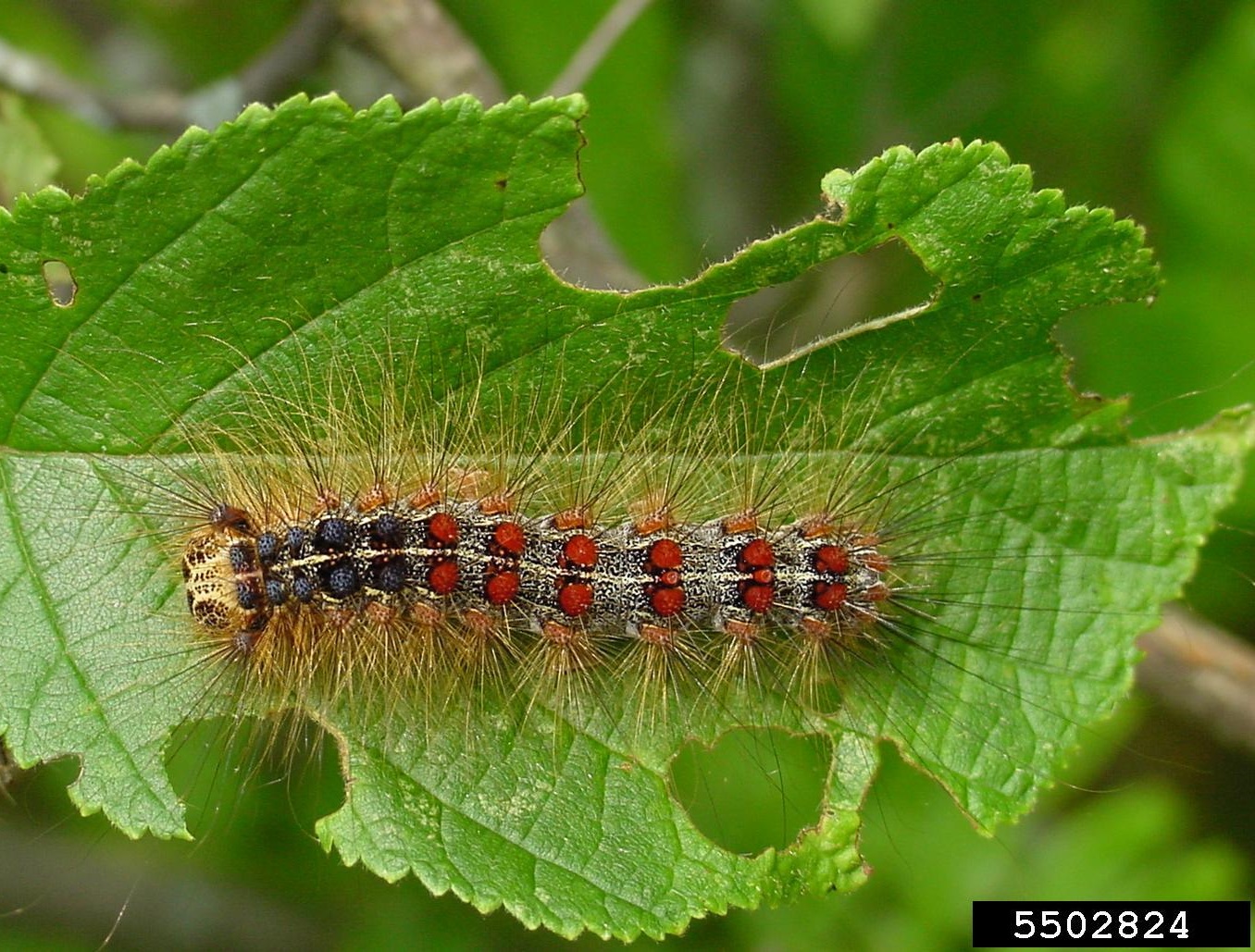 |
What is the gypsy moth?
- A non-native moth from Europe and Asia
- European and Asian gypsy moths are difficult to distinguish visually
- Gypsy moth defoliates hardwood trees
- Defoliation stresses trees and make them vulnerable to other pests
- Gypsy moth is mainly spread accidentally by people
Image: Bill McNee, Wisconsin Dept of Natural Resources, Bugwood.org
Read more about the gypsy moth
|
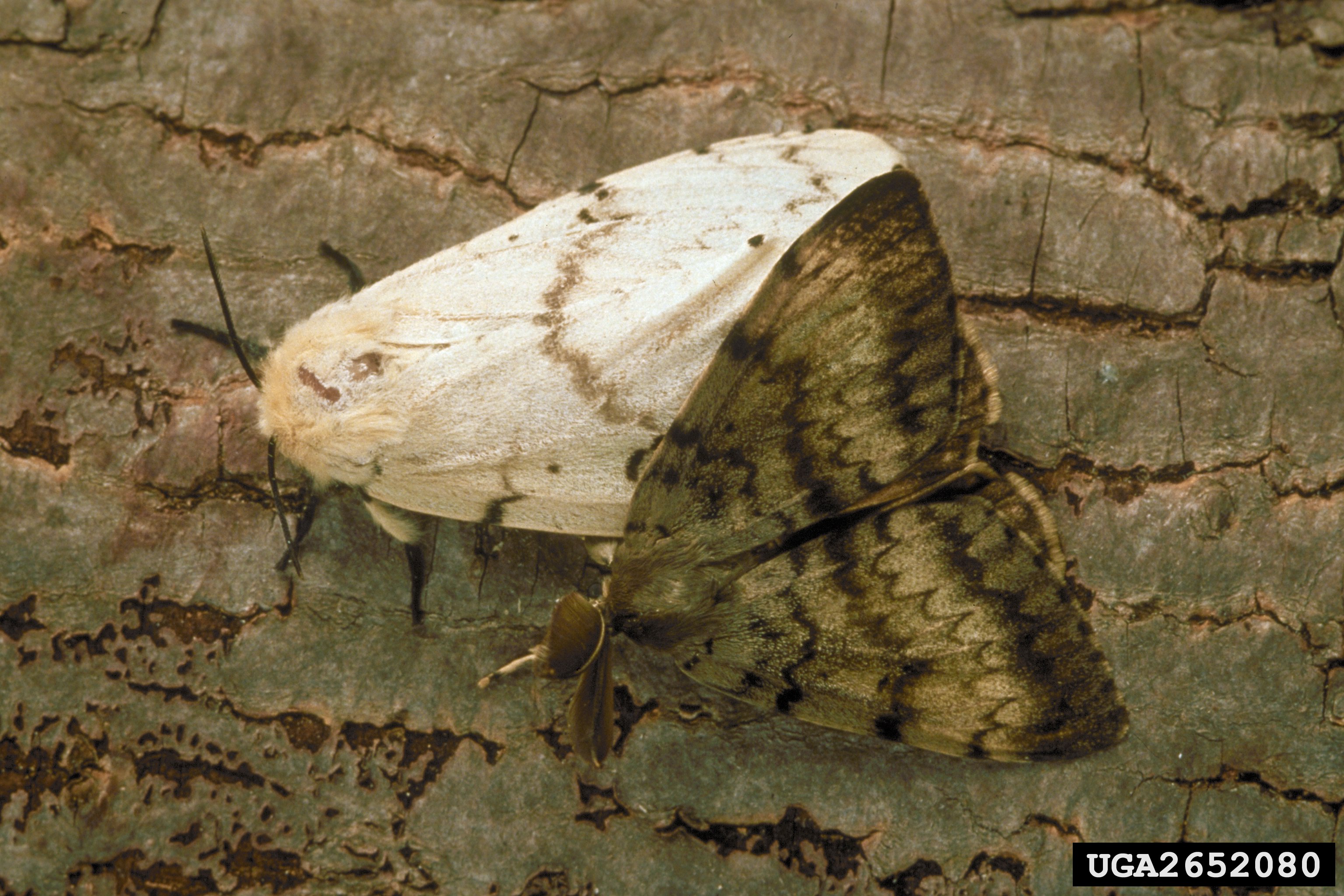 |
What does the gypsy moth look like?
- Male gypsy moths are ¾ to 1 inch and brown with black markings
- Female gypsy moths are 1-1/4 to 1-1/2 inches and white with brown or black markings
- Fully grown caterpillars are about 2 inches long and have a double row of blue and
red dorsal spots
- Gypsy moth pupal cases are dark reddish brown with tufts of hairs
Image: USDA APHIS PPQ , USDA APHIS PPQ, Bugwood.org
Read more about gypsy moth identification
|
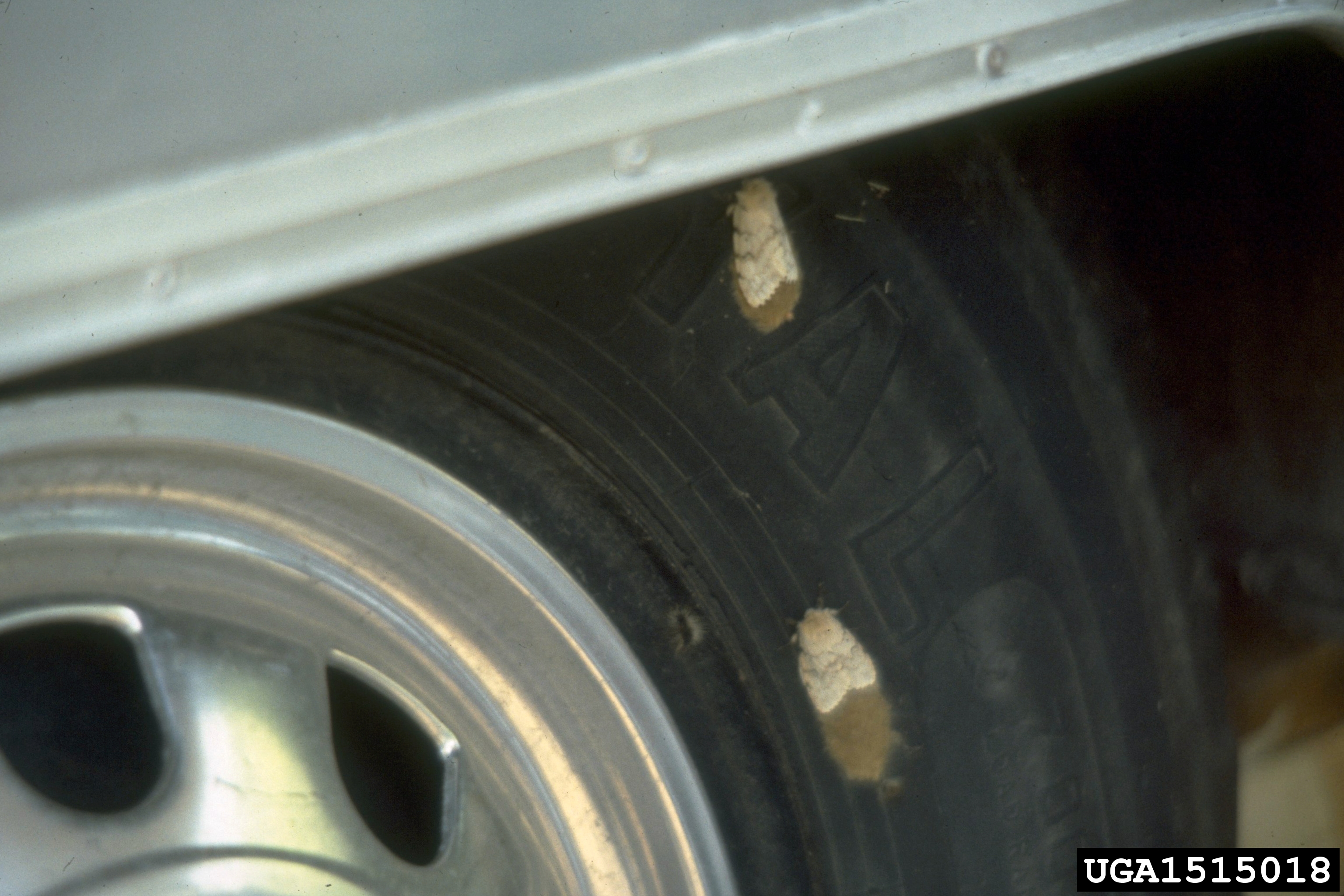 |
Who spreads the gypsy moth?
- Male gypsy moths fly but female European gypsy moths do not
- Female Asian gypsy moth fly
- People spread gypsy moths by moving the eggs
- Gypsy moths will lay eggs on almost man-made object that provides shelter
- Gypsy moth larvae spin silk threads that carry the larva on the wind
Image: Rusty Haskell, University of Florida, Bugwood.org
Read more about how gypsy moths spread
|
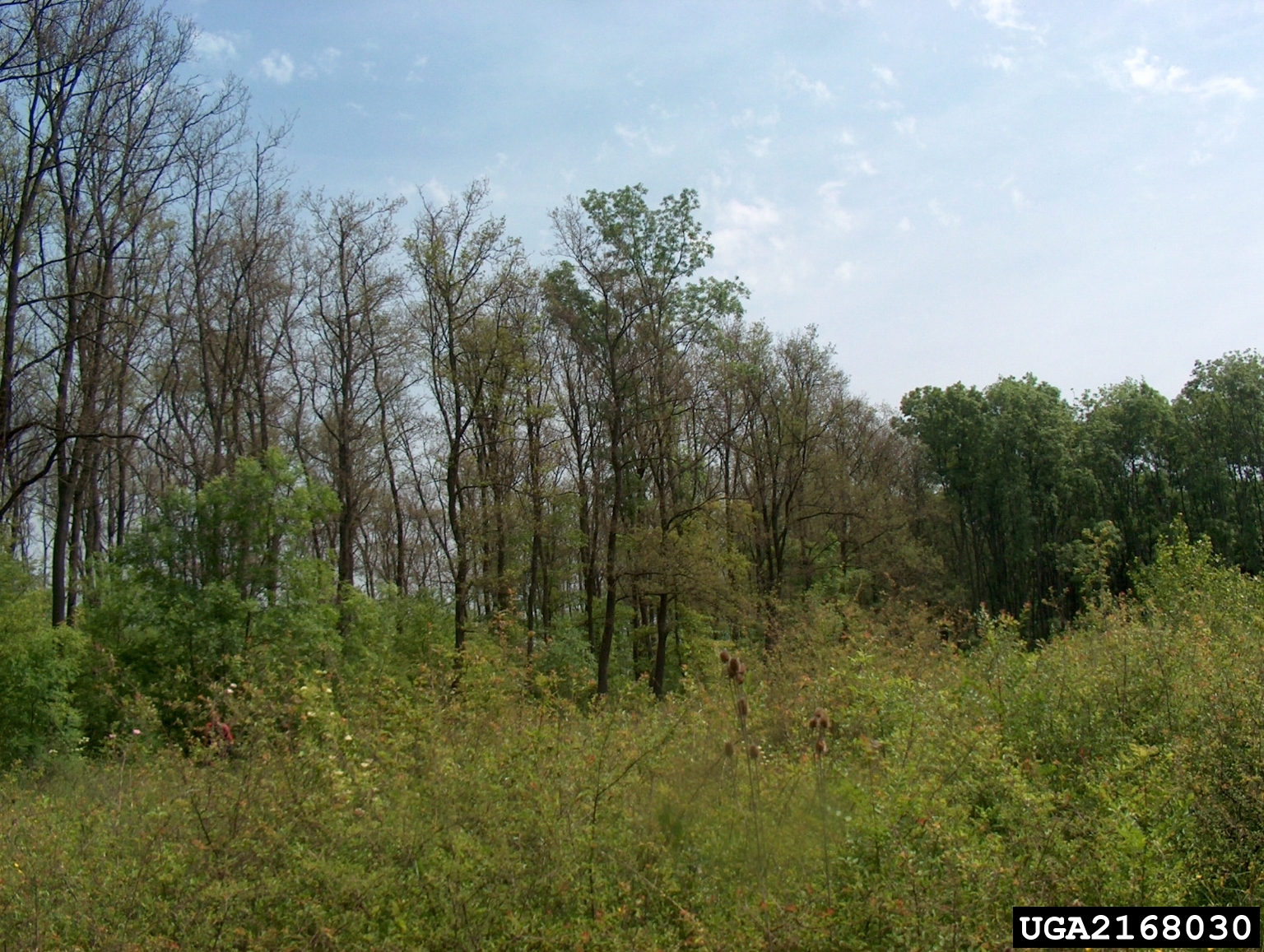 |
How will the gypsy moth affect you?
- Defoliation by gypsy moth can impact the appearance of your ornamental trees
- Defoliation by gypsy moth can stress forests and make them vulnerable to other pests
- Defoliation by gypsy moth can kill trees that are already stressed
- Defoliation by gypsy moth can reduce the productivity of forests
Image: Haruta Ovidiu, University of Oradea, Bugwood.org
|
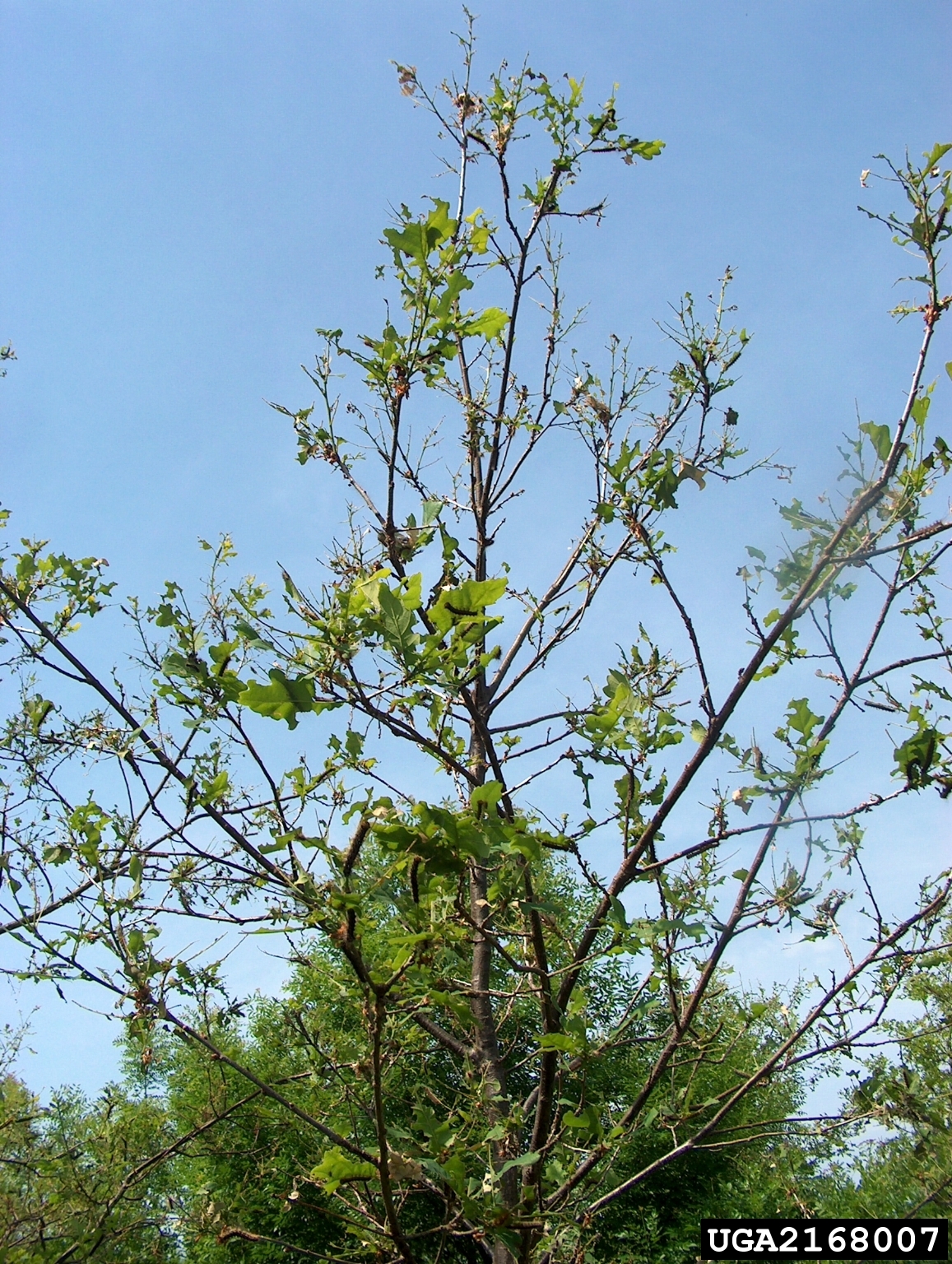 |
What are the symptoms of a gypsy moth infestation?
- Visible hardwood tree defoliation
- Large numbers of gypsy moth caterpillars crawling on trees, building, etc.; especially
at dawn and dusk
- Ground littered with small leaf cuttings and frass
Image: Haruta Ovidiu, University of Oradea, Bugwood.org
Read more about the symptoms of a gypsy moth infestation
|
| |
What can we do about the gypsy moth?
- Inspect vehicles, camping trailers, outdoor furniture, and outdoor toys for gypsy
moth egg cases
- Find out whether gypsy moth has been found near you
- Report any gypsy moth sightings
Read more about fighting the gypsy moth
|
| |
Where is the gypsy moth?
- Gypsy moth can be found in much of the northeastern U.S. and Canada
- Gypsy moth is occasionally found in Arkansas
- Gypsy moth is spreading slowly from the northeastern U.S.
Read more about the current range of gypsy moth in the U.S.
|




